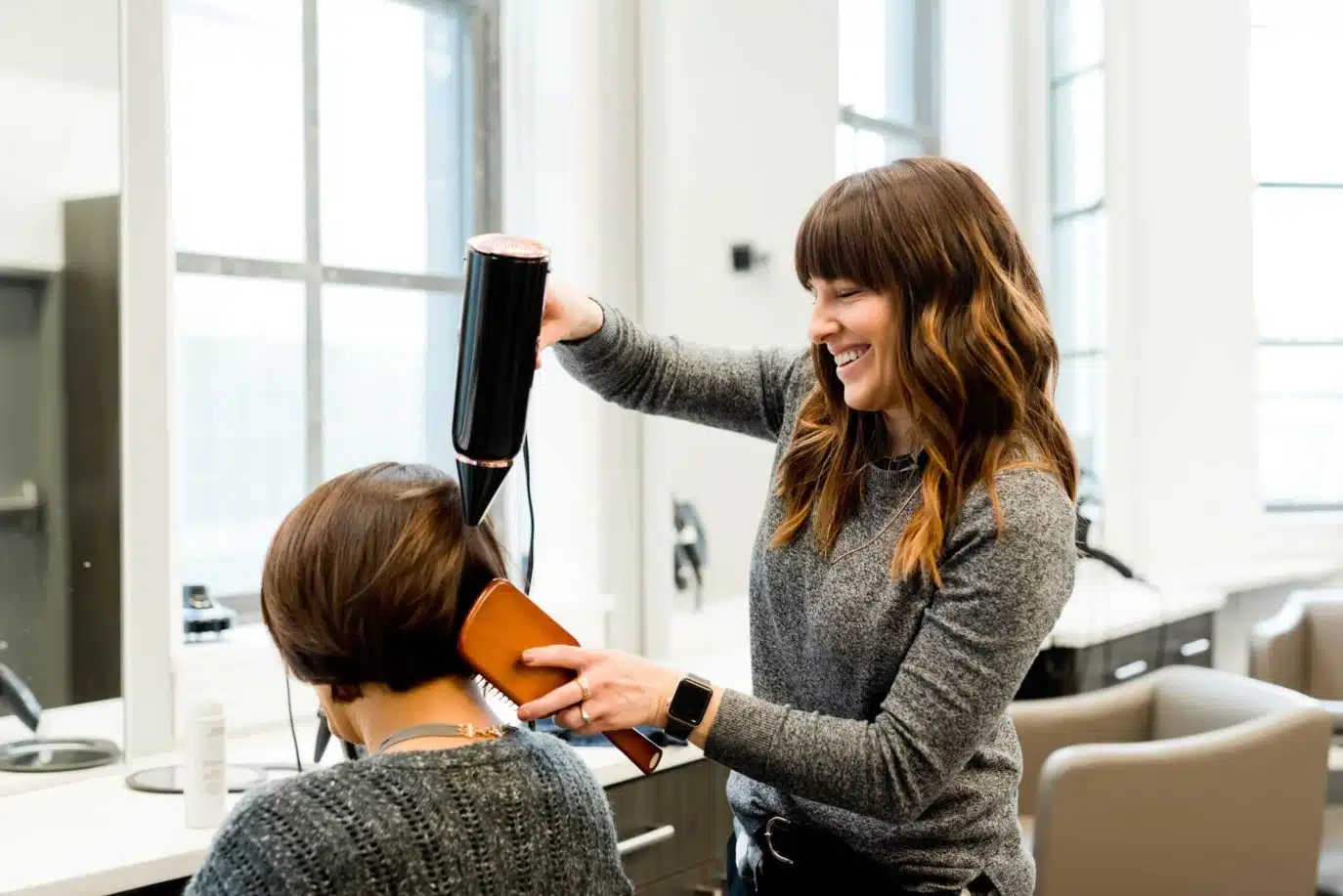How to Start a Hairdressing Business: 6 Steps to Set Up and Get Financing for it
Knowing how to start a hairdressing business is easier said than done. But if you have the right information and financial support, this process will be easier on you.
Hairdressing has proven to be a long-standing and staple business in the beauty industry. In fact, hair salons were less affected by COVID than other businesses. Some people even turned to this business at the height of the pandemic.
Why?
It’s because salons will always be in demand. After all, people will always need to cut their hair, right? It is an essential service in every community. In addition to this, it’s an easy business to set up and maintain.
That’s why a lot of people are interested in opening hairdressing businesses today. However, doing so is easier said than done. There’s a lot of hurdles to overcome in order to be successful, especially when it comes to proper business set up, such as choosing the right business structure, securing insurance, and handling legal requirements.
In this article, we’re going to make things easier for you. We’ll share steps you need to take to build a hairdressing business. We’ll also tell you how to get financing so you can grow and be successful.
How to Start a Hairdressing Business
Step 1 – Write a Business Plan
Every successful business starts with a business plan, and the hairdressing business is no exception. It’s the most important aspect of starting a business.
It describes the physical, financial, and organizational structure of your prospective business. Defining your business model is a key part of this process, as it aligns your operational setup and location choices with your overall strategy and goals. It shows you, potential investors, and lending institutions:
-
How you’re going to make money
-
Who your ideal customers are
-
Which locations are ideal
-
How your day to day operations will be, etc..
A business plan gives you the general idea of how you want your hairdressing business to look like.
It’s recommended that you do some market research so that you can get it right. You may also need to take a class, hire a financial planner, or a lawyer.
Step 2 – Draw a Budget
As soon as you have a business plan, your next line of action is to draw out a budget.
If you’re a home based salon, a few thousand dollars should be enough to set things up. The capacity for a home based salon is smaller than a commercial one, and as such, your expenses are limited. These expenses make up your overall startup costs, which include equipment, furniture, and initial operational expenses.
However, starting a hairdressing business in desirable locations could cost more than $100,000. There’s more chairs, desks, supplies, equipment, etc to buy and you have to factor in rent money too.
It’s always wise to have a general idea of how much you’re spending. It prepares you mentally when the time comes for the expenses. If your startup costs exceed your available funds, consider exploring different financing options and consult professionals before making any financial commitments.
Step 3 – Register Your Business
Registering your hairdressing business is a crucial step in establishing a legitimate and professional operation. Start by applying for an Australian Business Number (ABN), which is essential for tax purposes and to operate legally. Next, choose a business name that reflects your brand and is easy for clients to remember. Make sure your chosen business name is unique by checking its availability on the Australian Securities and Investments Commission (ASIC) website.
As a beauty business owner, it’s also a smart move to secure a matching domain name for your professional website. This will help you build an online presence and attract clients searching for hairdressing services in your area. Don’t forget to familiarize yourself with the Australian Consumer Law, as it sets out your obligations to clients and helps you operate your hairdressing business with confidence and integrity. Taking these steps ensures your business is set up for success from the start.
Step 4 – Choose a Good Location
Selecting the right location for your hairdressing business can make all the difference in attracting more customers and building a loyal client base. Look for a space that is easily accessible, has good lighting, and is visible to people passing by. Consider the presence of other local businesses nearby, as they can help drive foot traffic to your salon.
It’s essential to ensure your chosen location complies with local council regulations and zoning laws, so check with your local council before signing any lease agreements. Conduct thorough market research to understand your target customers and the type of environment they prefer. Use this information to create a marketing plan that positions your salon as the go-to destination in the beauty industry. By choosing the right location, you set your hairdressing business up for long-term growth and success.
Step 5 – Obtain Necessary Permits
To operate your hairdressing business legally and safely, you’ll need to obtain the necessary permits and licenses. This includes registering for workers’ compensation insurance to protect your team, as well as securing any required permits from your local council. Make sure your salon meets all relevant safety standards and regulations to provide a safe environment for both clients and staff.
As a business owner—whether you’re a sole trader or running a small business—it’s your responsibility to conduct due diligence and understand all legal requirements. Research the specific permits needed for your area and keep your documentation up to date. Taking these essential steps will help you avoid potential issues and ensure your salon operates smoothly from day one.
Step 6 – Stock Up on Inventory
Stocking up on inventory is a key part of getting your hairdressing business ready for clients. As a business owner, you’ll need to invest in salon equipment such as chairs, washing stations, and styling tools, as well as retail products like shampoos, conditioners, and styling products. Think carefully about the services you plan to offer and create a salon checklist to ensure you have all the essential equipment and supplies.
Sourcing high-quality products and equipment not only enhances the client experience but also helps build your reputation as a professional salon. By preparing your inventory in advance, you’ll be ready to deliver outstanding services from the moment you open your doors.
Step 7 – Hire a Team
Building the right team is essential for the success of your hairdressing business. Look for skilled and passionate hair stylists who share your commitment to delivering exceptional service. Consider the range of services your salon will offer and hire team members with the expertise to meet your clients’ needs.
Creating a positive and supportive work environment will help you attract and retain top talent in the beauty industry. As a business owner, showcase your team’s skills in your marketing plan to attract new clients and set your salon apart from other businesses. Investing in the right team ensures your clients receive the best possible service every time they visit your salon.
Step 8 – Create a Marketing Plan
A strong marketing plan is essential for promoting your hairdressing business and attracting new clients. Start by highlighting your services and your team’s expertise, and use a mix of marketing tactics to reach your target customers. Leverage social media platforms, run paid ads, and consider collaborating with other businesses in your area to expand your reach.
Make sure to create a professional website that showcases your services, allows clients to book appointments online, and reflects your brand’s unique style. Monitor your marketing efforts regularly and adjust your strategy as needed to ensure you’re connecting with your ideal clients. By investing in effective marketing, you’ll build a loyal customer base and establish your salon as a leader in the competitive beauty industry.
Step 3 – Choose a Good Location
Starting your hairdressing business from home is not a bad idea. It just isn’t really scalable, and may come with a few security and legal risks.
To build a thriving hairdressing business, your salon has to be in a location that will attract your ideal clients. It must be easily accessible to them, too.
Establish your salon in an upscale shopping district if you’re aiming to attract an affluent clientele. If you’re focusing on young customers, you should be located in trendy or up-and-coming neighborhoods. Offering a variety of beauty treatments can also help attract a broader range of clients, as different services appeal to different customer groups depending on the location.
Step 4 – Obtain Necessary Permits
It pays to be on the good side of the law.
So, get the necessary permits in order to operate legally in your chosen location. This includes business licenses, permits and other legal documents. When registering your hairdressing business, the process is similar to that of any other business, so consider factors like branding and market competition. You also have the option to register as a company, such as a limited company, which can provide legal protection and financial benefits for your salon or barbershop. Ask the local government of that region for more details on this.
You can also consult an attorney if things look fuzzy to you.
Step 5 – Stock Up on Inventory
Get everything you need to run your day-to-day operations smoothly.
For starters, you’re going to need chairs, washing stations, hair tools, and styling products. These items are needed in order to cater to prospective customers.
You can also stock up on products that they may need after getting a service from you. This way, they can maintain their new look and be satisfied with your work for a longer time. Additionally, consider planning your inventory and equipment for any new services you plan to introduce as your business grows, so you’re prepared to meet changing customer preferences and industry trends.
Step 6 – Hire a Team
It’s always wise to have a team of stylists, even if you’re an excellent stylist yourself. This improves your profitability, especially when you’re in a retail space and have a steady stream of customers.
When hiring stylists, keep your target customers in mind. Pay attention to their technical skills, knowledge, and talent. But remember that their personal character and overall aura are quite important, as well. After all, the right candidate should be able to give your ideal clients the best experience at your salon.
Step 7 – Create a Marketing Plan
Finally, build a plan to get the word out on your new salon.
You should do this even before you open. This way, you can generate enough buzz for your launch and go upwards from there.
So, launch your website and do some online adverts. Integrate online booking to make it easy for clients to schedule or cancel appointments at any time. Start taking appointments online before you open up – that’s if you don’t want to do walk-ins alone. Consider using a helpful tool, such as a loyalty program, to track client spending and increase profits.
You can also do some ads in the local paper or media. A launch event or promotion is ideal too.
Once you’re up and running, devise an ongoing marketing strategy to keep customers flowing into your salon. Word of mouth is a powerful marketing tool, so implementing referral programs and focusing on customer satisfaction can help encourage positive recommendations. This way you can keep growing.
Getting Finance For Your Hairdressing Business
Knowing how to start a hairdressing business from home is a good thing. In fact, knowing how to start a hairdressing business from anywhere is fantastic. However, all that knowledge is wasted if you don’t have the finance to start your business:
There are many ways to finance your hairdressing business. If your business plan shows that you don’t need that much of a capital, you could probably finance your operations by yourself. But in most cases, your budget will be more than you can afford.
That’s when you need to approach a traditional bank or other finance institutions for a loan. Before doing that, check your budget and research what types of loan you need.
If you’ve gotten a new space but need expensive salon equipment, apply for equipment loans. But if you’ve yet to get a space, buy necessary equipment or hire stylists, it makes more sense to get a small business loan. This allows you more flexibility on your purchases than equipment financing.
But make sure to only get loans for things you actually need. At the same time, the rate for smaller loans may look attractive, but they may not provide enough money to sustain your launch and day-to-day operations. Weigh your options to come up with the best plan.
Lastly, don’t forget to get the necessary documents asked by the lender before submitting your application. Don’t hesitate to ask them questions if you’ve got something on your mind. Finally, make sure you respond quickly to the lender’s queries so that your application won’t be delayed. Setting up a dedicated business bank account is essential for managing your finances and handling loan transactions efficiently.
When planning your equipment and operational needs, also consider how you will be taking payments. Efficiently integrating payment systems with your salon operations will help you manage customer transactions smoothly.
Kickstart Your Hairdressing Business With Ease
Knowing how to start your own hairdressing business may seem difficult. But if you’re serious about it and are armed with the right information, that process will be easier on you.
Have a business plan, set a budget and get necessary permits before setting up shop. It’s also important to get a business loan to finance your operations. This way, you can start the business whenever you want.
If you need further assistance, Unsecured Finance Australia is here to help. Apply online and you can receive your approval within 24 hours.




